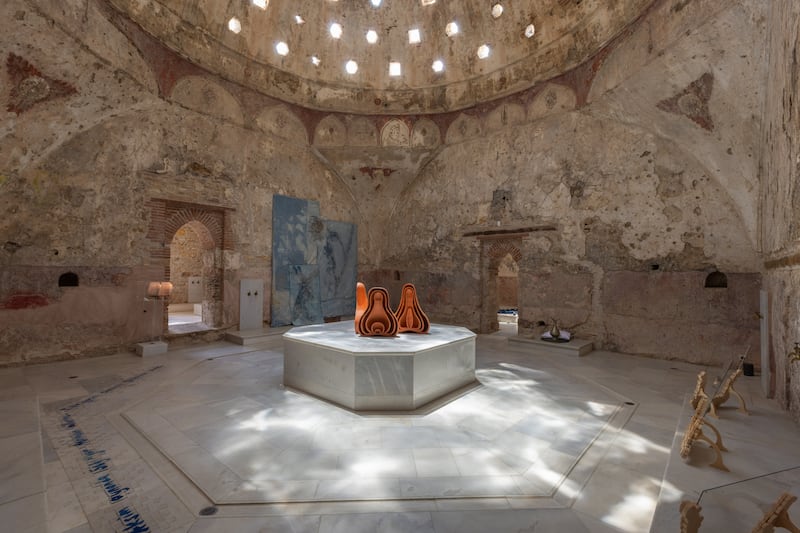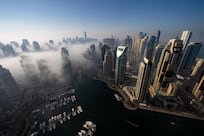This summer, Europe remains a hot spot for holidays and cultural tourism – particularly the Mediterranean and Greek islands, where contemporary art continues to blossom in unexpected locales beneath the scorching sun.
Among this year's many efforts, cultural programming platform DEO Projects has launched the third iteration of its art show on the Greek island of Chios.
Sandwiched between Athens and Turkey, which is only a 25-minute ferry ride away, the slow-paced island hosts this year’s group show titled My Past is a Foreign Country at Temenos Hamidiye, a disused mosque also known as Bairakli, and an Ottoman hammam – steps away from each other in the island’s castled old town.
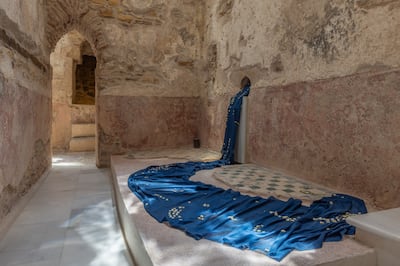
The show’s themes of fluidity, memory and materiality are explored by an international roster of artists from neighbouring countries and the Middle East.
Greek artists Stelios Faitakis, Nikomachi Karakostanoglou, Petros Moris, Maro Michalakakos and Maria Tsagkari are joined by Beirut's Dala Nasser, Lebanese-Dutch artist Mounira Al Solh, Turkish-German artist Aykan Safoglu, Hera Buyuktasciyan from Turkey, Abbas Zahedi from the UK, Cypriot-British artist Yorgos Petrou and Iranian artist Avish Khebrehzadeh. Together, their works blend through the two historic sites' soaring interiors, mysterious nooks and unassuming corners.
For Deo Project’s founder and exhibition curator Akis Kokkinos, the show holds a personal resonance as much as the island of Chios itself. “I still get emotional every time I land at the airport, as I remember my aunt waiting to pick me up as an unattended child from my flight,” he tells The National.
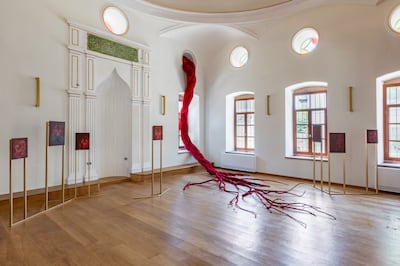
Three years ago, during the pandemic, the curator launched the organisation as a way to bring the world's attention to the island's diverse community, with its multilayered Greek and Ottoman influences and histories – as well as its “rich natural and geological landscape”.
Unlike its widely popular sisters Mykonos, Patmos and Hydra, Chios is a no-fuss island without high-end hotels – rather than a tourist-laden “see and be seen” atmosphere, the narrow streets are dotted with locals and daily Turkish visitors.
Kokkinos says the lack of development on Chios drove him to establish a “cultural institution that supports transnational dialogue and contributes to the cultural infrastructure of the island”.
“I’m interested in exploring the island as an institution, and that’s the reason why we have a nomadic character as an organisation, moving freely across the island every year.”
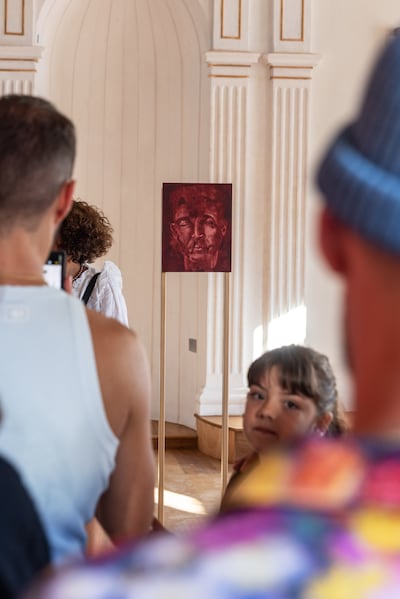
After using a local slaughterhouse and a maritime cultural centre in former years, his decision to choose two historically charged sites this year comes from an urge to “touch upon the notion of monuments to ask what purpose they serve and for whom and for what narratives”. Kokkinos is particularly interested in the “fluidity and constant transformation” of the venues' past roles.
The layered and intertwined backgrounds of both spaces construct what the curator calls “monumental taxidermies”. The fact that the Hamidiye was a Catholic church before becoming a mosque and that both venues served as Asia Minor refugee sanctuaries during the exchange of populations support his thesis. Recently, Syrian refugees were also hosted inside the castle’s trench.
Whether for worship or cleansing, the intended uses of the sites prompt you to come “closer to your higher self,” says Kokkinos, which is handy in an exhibition about transformation and alchemy of histories and memories.
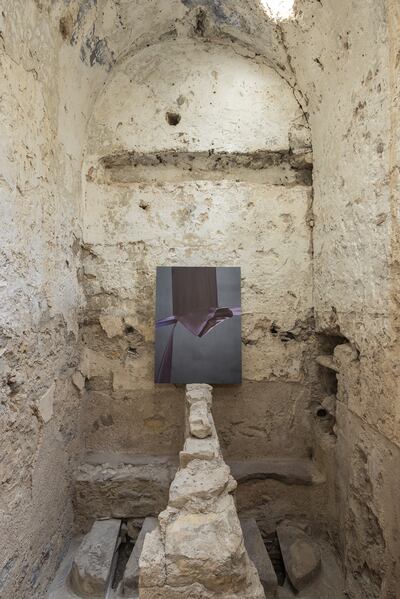
From transhistorical connections to water’s malleable force, Kokkinos says the show’s themes are “somehow dictated by the venues and inspired the artists to work around them”. Among the nine commissions, Hera Buyuktasciyan’s An Ode To A Distant Spring occupies the hammam’s “warm room” with two sinuous paths of blue fabric – used for cleaning and head-covering – adorned with pieces of soap.
The interior’s bygone steam and both materials’ sensual tactility contribute to the serpentine connections the artist suggests between bodily existence and collective memory.
Physicality is a first-hand experience in Lebanese artist Mounira Al Solh’s Clogged, which conveniently sits at the hammam’s entrance – a group of clogs traditionally worn by bathers are on offer while touring the show. Despite evoking a sense of hospitality, the clatter of heavy wood against the ground creates an alarming echo.
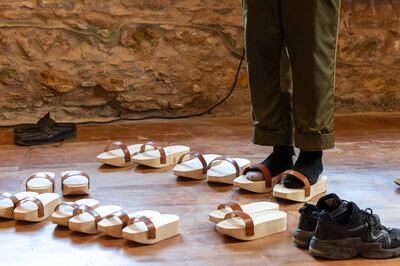
“The priority to me is the spatial and somatic experience of the visitor instead of the intellectual justification,” Kokkinos says about his emphasis on materials and senses.
“The artists and myself wanted to choreograph something very sensorial – from the sounds of the clogs to the smell of the soaps.” He also underlines the softness of the red velvet installation To All Of Us by Maro Michalakakos inside the mosque, which radiates a similar sense of alertness through its sanguine hue.
Gushing from the circular glass window and trickling across the floor, a thick stream of red velvet fabric plants its root-like legs on to the mosque floor. On a higher level, the balcony fence is tightly woven with the same material in a ritualistic fashion – a small stool also upholstered with red velvet looks down on the installation and Avish Khebrehzadeh’s seven portraits of men.
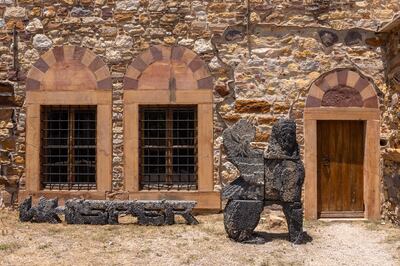
Rendered in a similar tone of red and raised by metal structures to eye level, the paintings substitute for the praying bodies that were once inside the mosque as well as those who occupied the space for shelter or out of curiosity. The Iranian artist’s portraits reflect on the silent souls of bygone yet intertwined histories that inhabit the island.
“We need moments of surprise in our everyday lives especially when those experiences disrupt static forms of knowledge and habits,” Kokkinos says about the ever-present element of spontaneity.
“The fact that probably most visitors don’t belong to the so-called 'art world' gives us a great pleasure, as one of our main goals is to reach a wider audience and to bring sociopolitical change in the long-term.”
Juxtaposing contemporary art with historic sites, he notes the cruciality of respecting the people who only want to see and admire history. “To find a balance is important.”
My Past is a Foreign Country is on view at Chios until August 28
